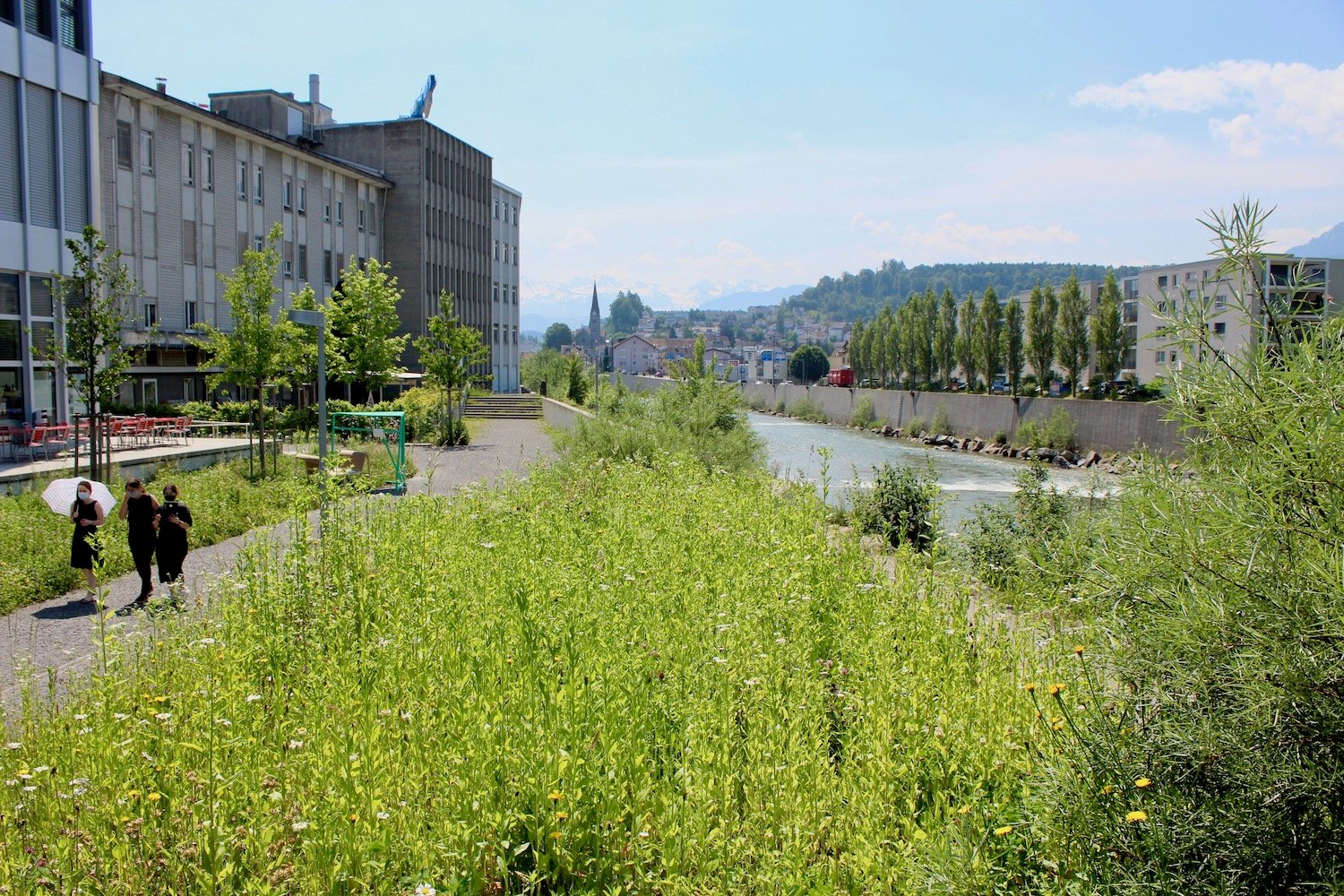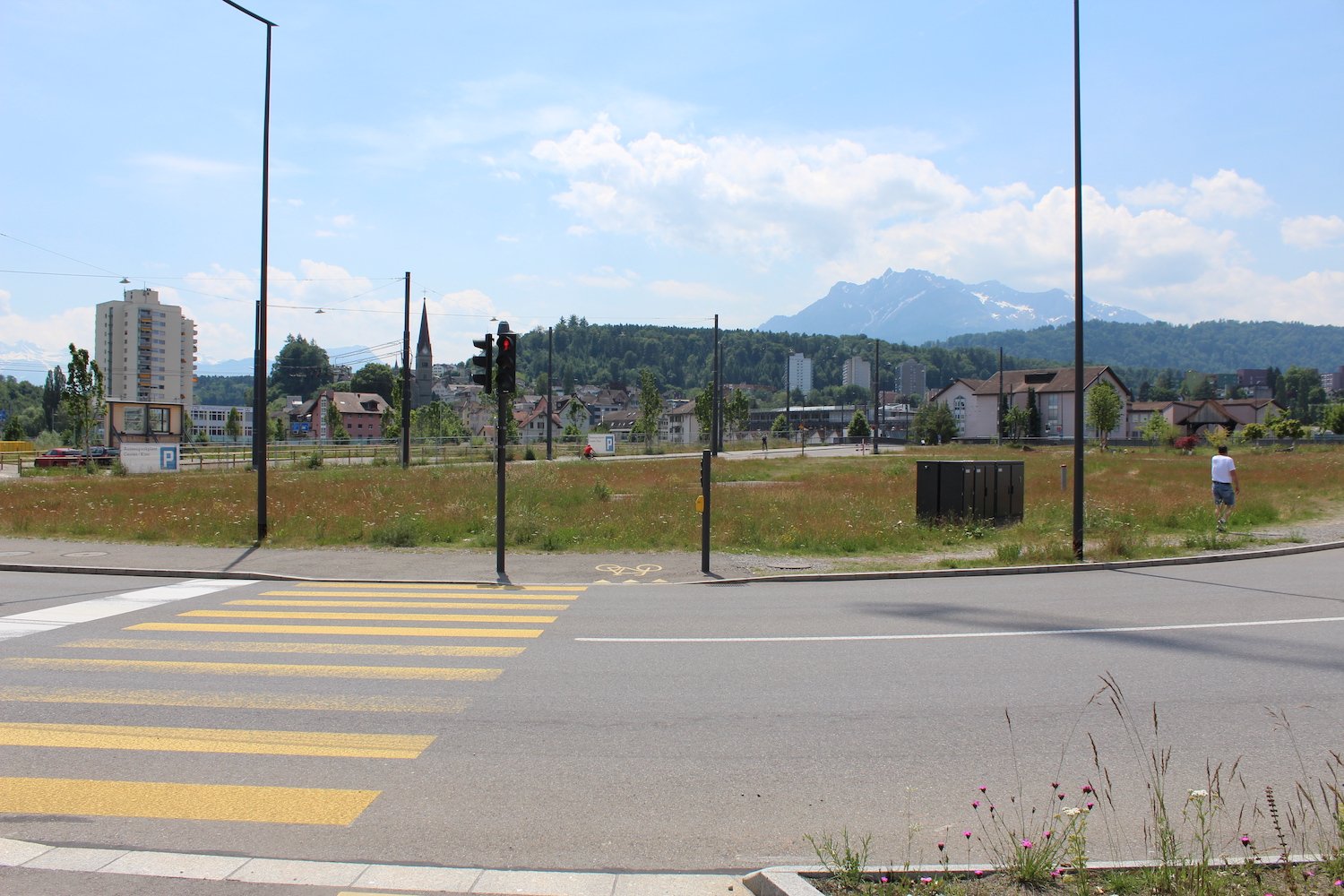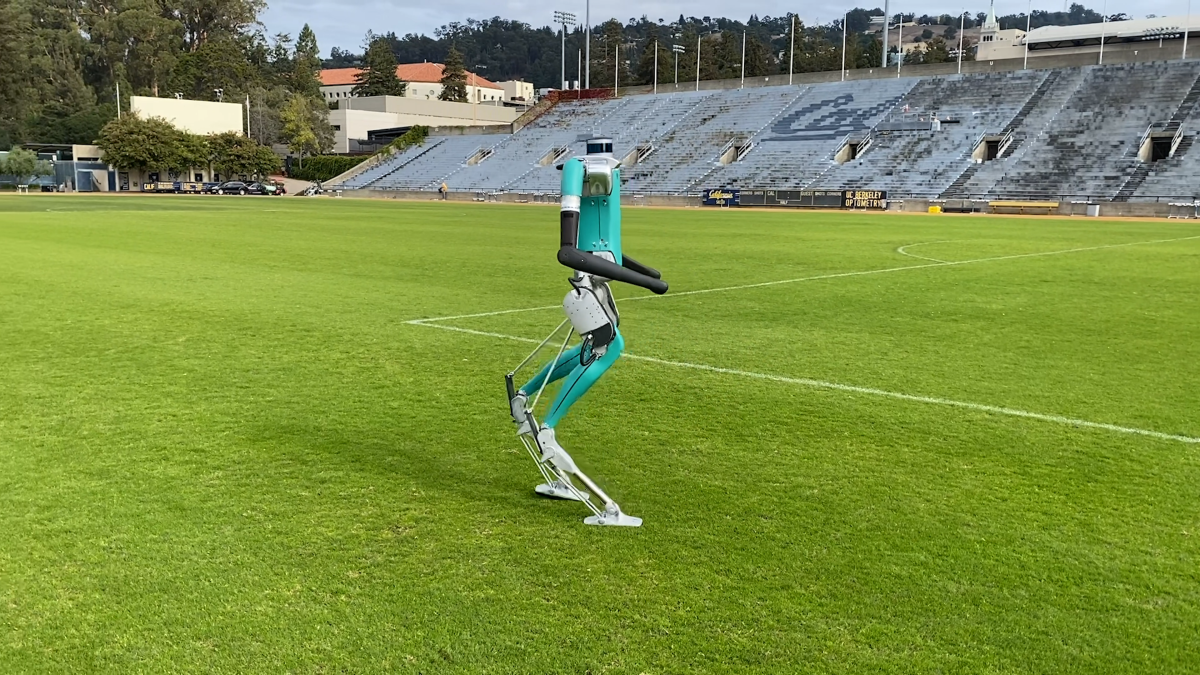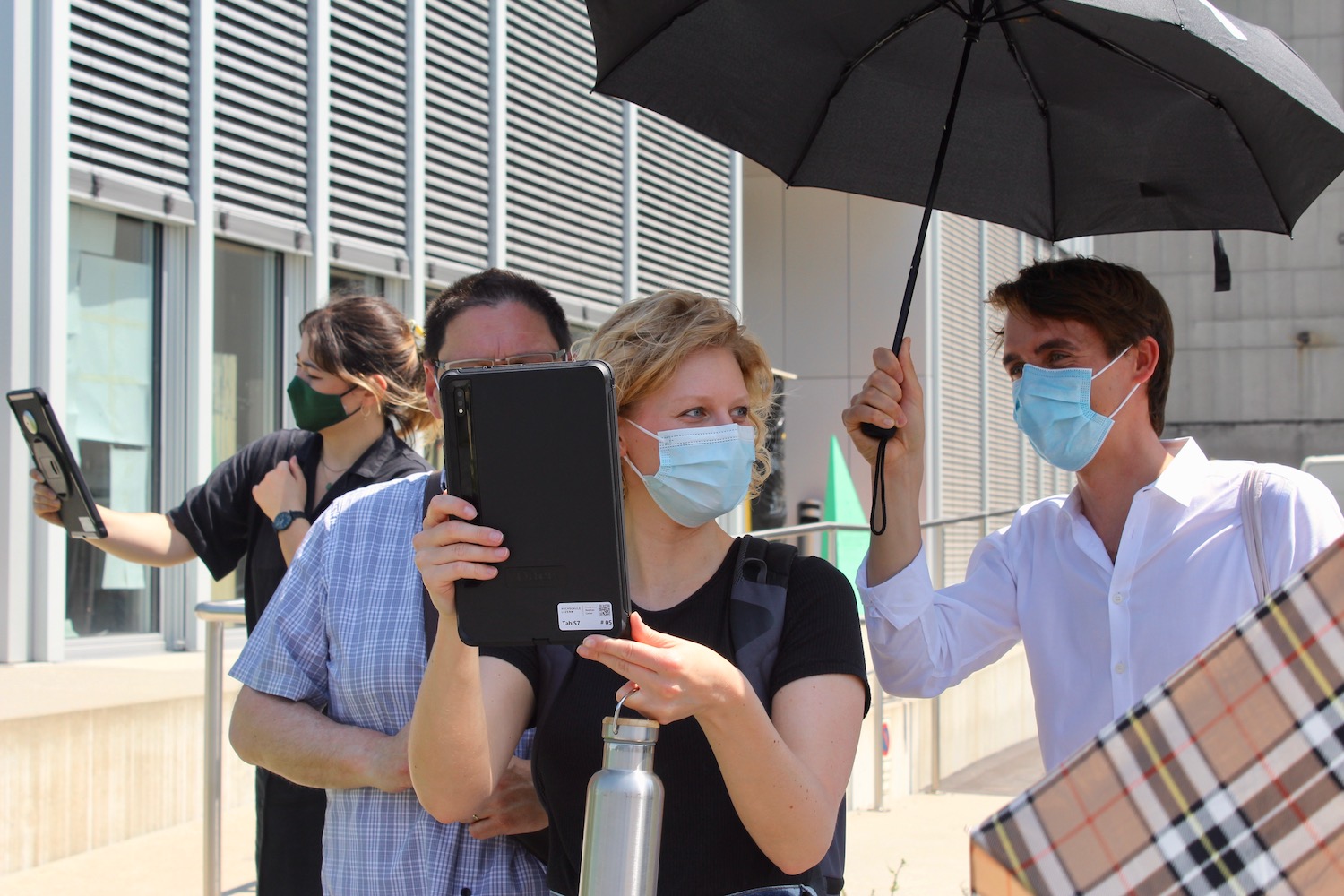When it comes to redesigning and developing individual areas or even entire areas, it is not uncommon for residents to begin with a certain amount of skepticism. Therefore the task of officials in municipalities or spatial planning offices is to win over those affected by their ideas.
There is hardly a better way to do this than if people could see with their own eyes what their nearby living space would look like one day. In other words: highly complex and overlapping spatial development must be democratized.
People should actively help shape their city
Students from the Lucerne School of Art and Design did the job. In an eight-week project with so-called “Augmented Reality” (AR), they developed city park ideas that will be used by many of the people who will live here one day. Specifically, it concerns the free space between Lucerne University of Applied Sciences and Arts and Kleine Emme. The municipality took over the area in 2020 in order to develop it to their taste.
Highlight: People can walk in the area near Kleine Emme using tablets, while various objects such as trees, benches, or even a pole or platform appear on the screen. Some may be familiar with this from Pokémon Go which was popular a few years ago or from tourist attractions. The project was created in cooperation with the Municipality of Emin and the Development Agency Lucerne Plus.
The project can be expanded
At the moment, the same installs always appear on the screen. Project manager and lecturer Tobias Matter explained while presenting the students’ work that “after further development, it might be possible for people to choose from various suggestions and put things into the scene according to their ideas”.
He describes this as a “pilot project from central Switzerland”. To this end, the university is working with CityScienceLab in Hamburg to develop new AR applications for spatial planning projects. “In the long run, this should result in an ‘Augmented Reality Toolbox’ in which, on the one hand, residents can experiment and evaluate proposals virtually, and on the other hand, use augmented reality to develop their own ideas and discuss them from their perspective on the site using augmented reality, on the other hand, Mater explained. There is now a great deal of interest in such tools.
AR technology will also be used in Seetalplatz
The Emmenpark project is just the beginning. Because there are plans for a new park or town square at Seetalplatz. According to Christoph Zurfluh, director of the Lucerne North region, augmented reality technology will also be used here if possible. “Existing perceptions of buildings and landscaping are very good. But if you can put things directly in the room, that is another thing. Especially with the aim of engaging the residents.”
The fact that technology is currently being used in Emmen of all places is not only due to the fact that the leading department of the university is here. But also with the fact that Emmen should quickly develop into a smart city. “A smart city means thinking and acting in six dimensions with people at the centre. This model has established itself throughout Switzerland, but also internationally,” explains District Manager Zurfluh.
“The smart city approach can be well explained using the example of Emmenpark.”
Christoph Zurfluh, District Manager, Lucerne North
The six dimensions of urban development are mobility, life, economy, environment, governance (state, administration, and society) and people. “The dimensions are interconnected, coordinated with each other and aim in the same direction,” Zurfluh says. This is forward-looking insofar as work has been done so far in individual dimensions and therefore the potential of the regions is often not fully exploited. Lucerne is now also taking a smart city approach (Zentralplus reported).

Smart City: Emmen should play a leading role
“The smart city approach can be well explained using the example of Emmenpark,” Zurfluh says. In the past, planners would design a beautiful looking park and the municipality had implemented parts of it within budget. “The modern approach now attempts to network the aforementioned topics from the start, to engage people and use new technologies in the process,” says the district manager.
Questions arose about whether the park would also contribute to the environment (the ‘environment’ dimension) and provide added value to the local population (the ‘life’ dimension). You also need to think about who will take care of life in Emmenpark (the ‘people dimension’) and which solution can be funded at all (the ‘judgment dimension’). “In addition, there is participation from the local population, for example in the presentation of the AR project,” Zurflüh says at the end.


“Certified tv guru. Reader. Professional writer. Avid introvert. Extreme pop culture buff.”






More Stories
How the technology behind ChatGPT powers this bot
Mercedes G580 with EQ technology: The G-Class has become electric
What are the consequences for medium-sized technology and industrial companies?